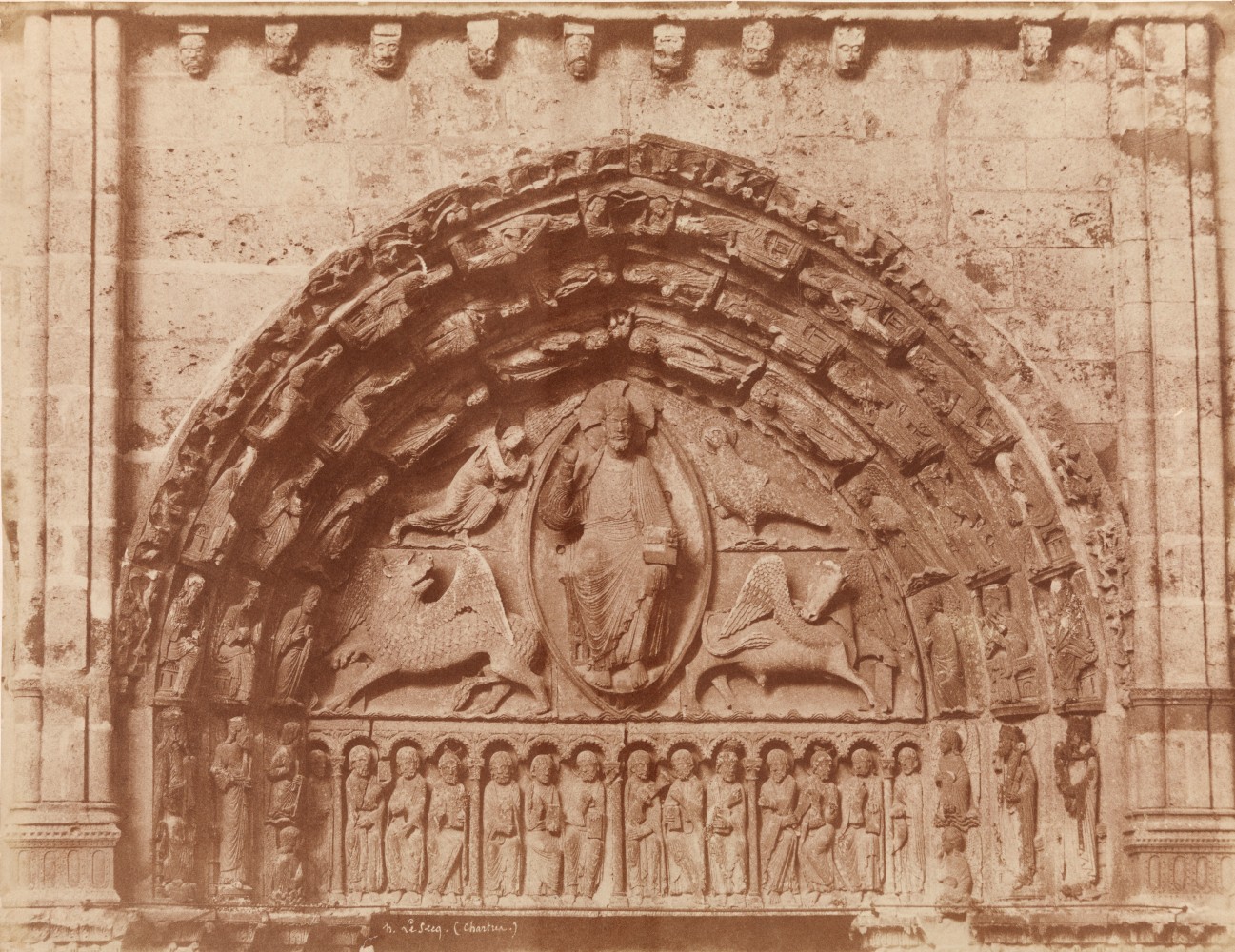
Henri Le Secq (French, 1818-1882)
Royal Portal tympanum, Chartres Cathedral, 1852
Coated salt print from a paper negative
35.7 x 47.9 cm mounted on 46.1 x 59.4 cm card
Signed in the negative
Inquire
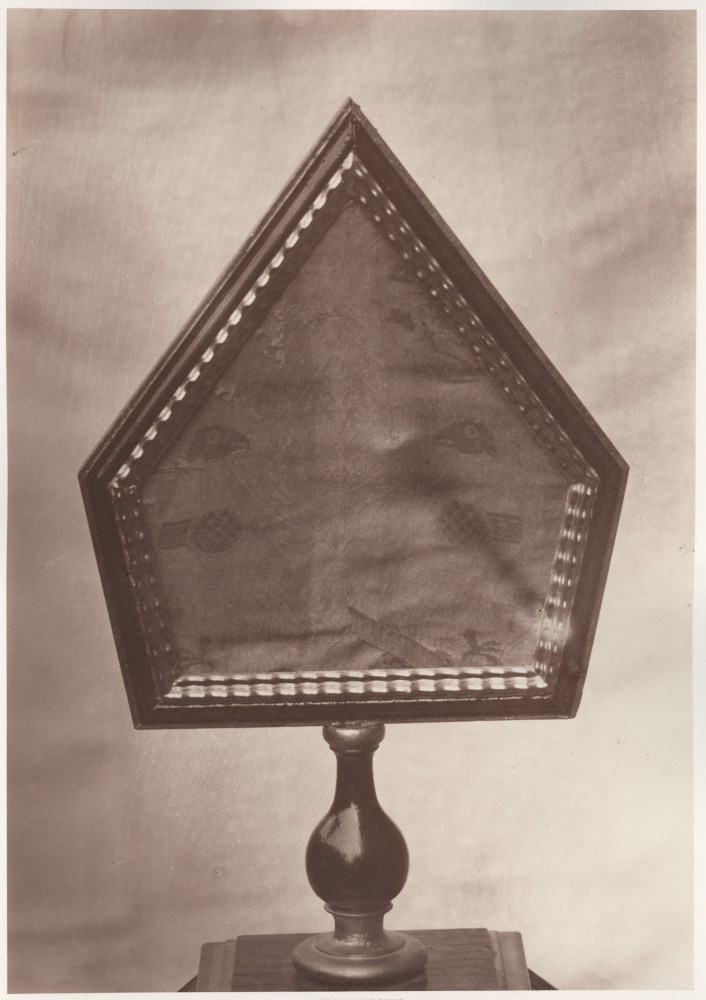
Louis-Auguste & Auguste-Rosalie Bisson (Bisson Frères) (French, 1814-1876 & 1826-1900)
Miter of St. Louis, Bishop of Toulouse, 1850s
Albumen print from a collodion negative
34.3 x 24.1 cm mounted on 57.0 x 40.1 cm paper
Printed "BISSON FRÈRES PHOTOG." on mount
St. Louis of Toulouse (1274-1297) was born in Brignoles, Provence, the second son of Charles II d'Anjou, King of Naples. When his older brother died in 1295, Louis became heir to his father's secular titles, but he gave up all claims to his royal inheritance in favor of his brother, Robert of Anjou. Louis took the Franciscan vows and pursued a life of poverty and chastity. He was consecrated Bishop of Toulouse in 1297. The same year, at the age of 23, he died. His canonization took place in 1317. Relics of the saint are preserved in the church of Saint-Sauveur at Brignoles, including the miter reproduced in this photograph.
Inquire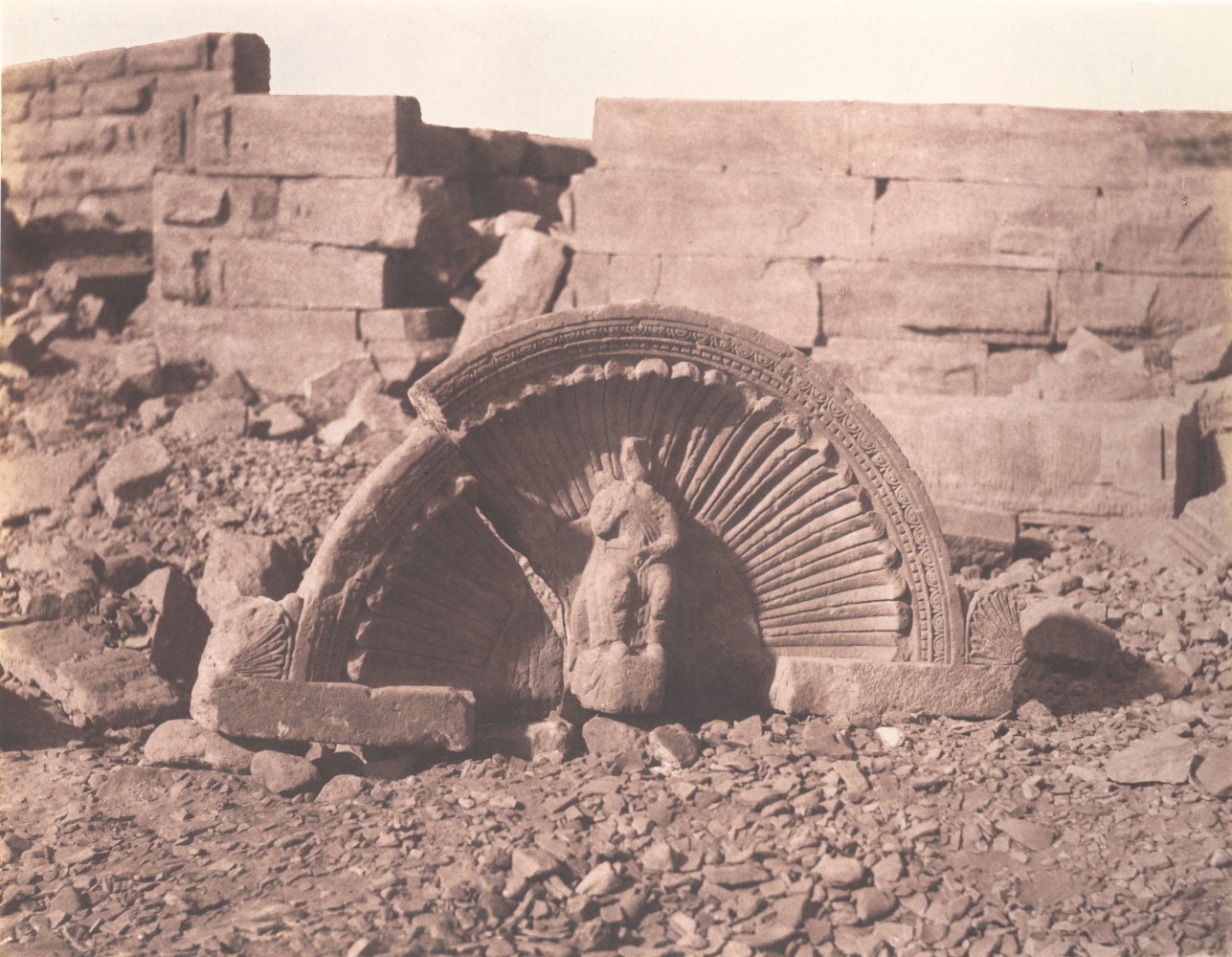
Félix Teynard (French, 1817-1892)
Tafah (Taphis). Constructions à Assises Courbes - Partie Superieure d'une Niche Sculptée. Pl. 114, 1851-1852
Salt print, 1853-1854, from a waxed paper negative
23.9 x 30.7 cm

John Beasley Greene (American, born in France, 1832-1856)
Mariette's excavations, granite door found to the left of the Sphinx, Giza, December 1853
Waxed paper negative
31.2 x 24.3 cm
Greene arrived in Egypt in late 1853. An early stop on this first trip was Auguste Mariette's excavations at Giza. Mariette, an ex-journalist and linguistic prodigy whose credentials for excavating were based on his having catalogued all the hieroglyphic texts in the Louvre's Egyptian collections. He had been in Egypt since 1850 and by the time of Greene's arrival had already staked his nation's claim to the almost-buried stone Sphinx by erecting a French flag on its head. Greene's images of Mariette's excavations, to which he was given privileged access, are some of his earliest in Egypt. This negative, a view of the secret doorway leading to a burial chamber displays an unexpected abstraction of light and dark which heightens the drama of Greene having captured this freshly excavated site.
Inquire
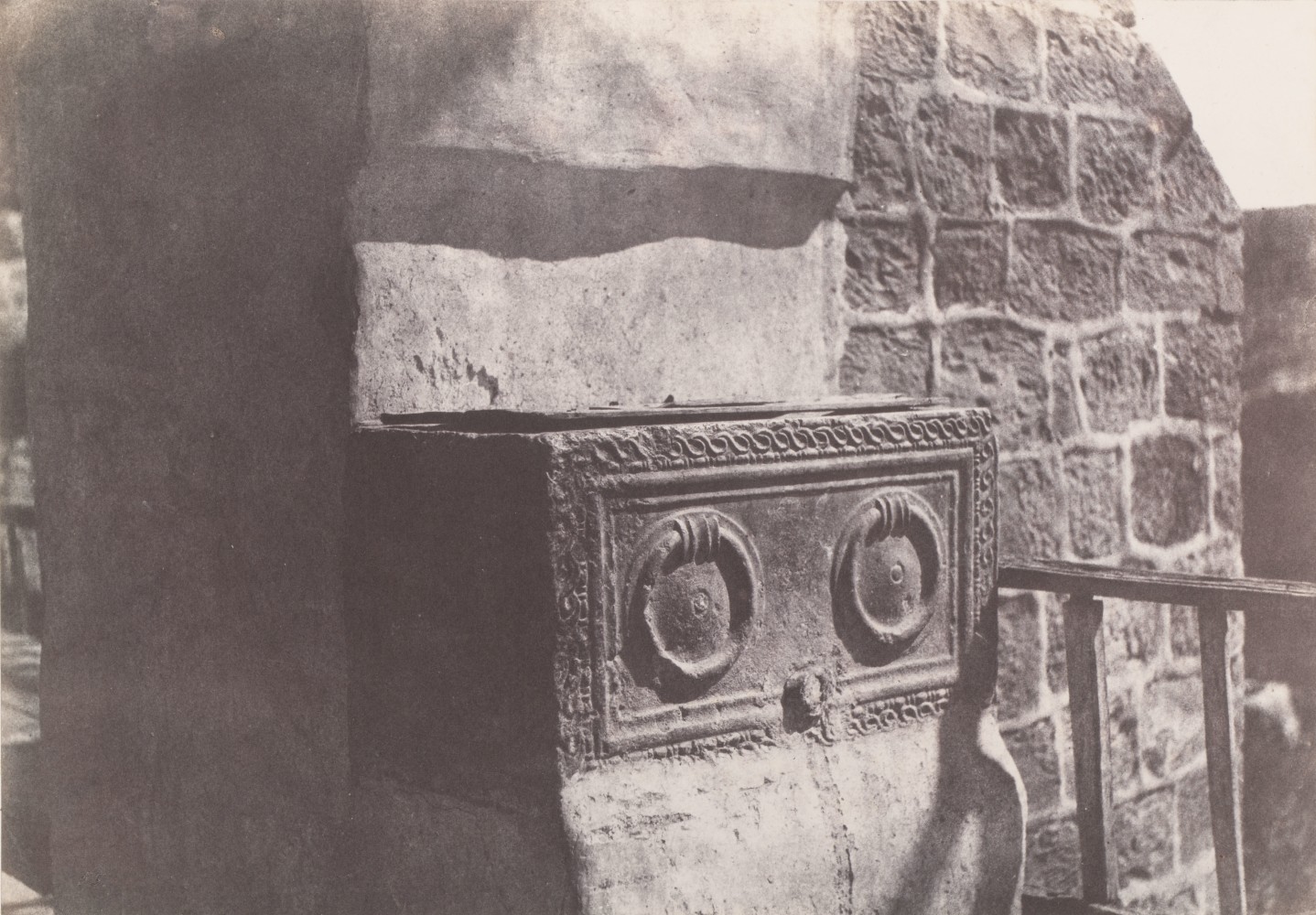
Auguste Salzmann (French, 1824-1872)
"Jérusalem. Sarcophage Judaïque", 1854
Blanquart-Évrard process salt print from a paper negative
23.2 x 33.2 cm mounted on 45.0 x 56.6 cm paper
Title and credits lithographed on mount
Inquire
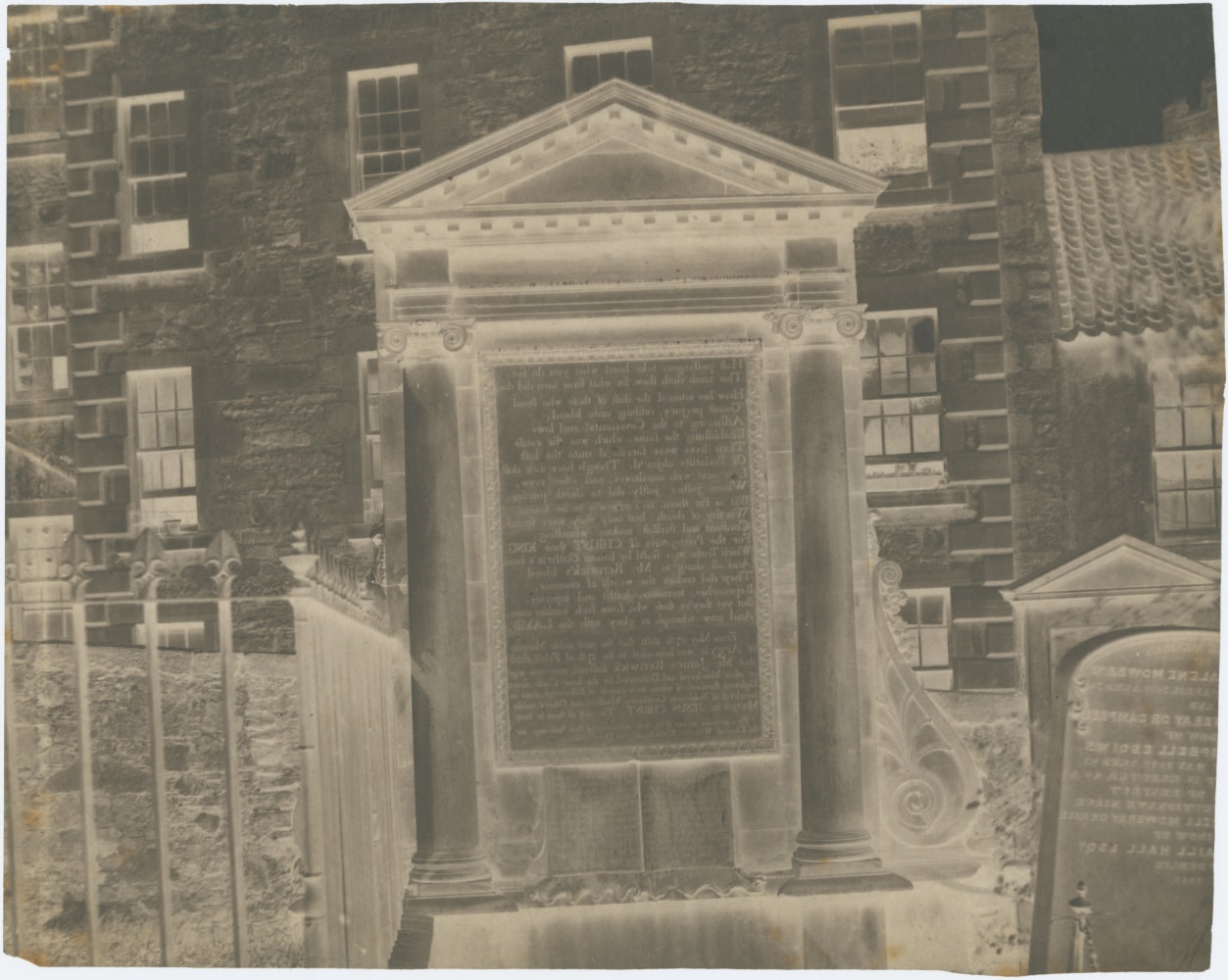
Attributed to Dr. Thomas Keith (Scottish, 1827-1895)
Covenanters' Monument, Greyfriars, 1853-1856
Waxed paper negative
21.4 x 26.6 cm
A surgeon by training and an amateur photographer by avocation, Dr. Thomas Keith made his first forays into the field with a camera in 1852 or 1853. In the striking graphic waxed paper negative of Covenanter's Monument, Greyfriars, from 1853-1856, the architecture is reduced to a composition of strong geometric patterns with the light delineating and enhancing its shapes and textures. Covenanters' Monument is one of several studies Keith made of Greyfriars Churchyard in Edinburgh. Greyfriars was already part of Scotland's emerging photographic tradition and was featured by Hill & Adamson.
Inquire
Henri Le Secq (French, 1818-1882)
Royal Portal tympanum, Chartres Cathedral, 1852
Coated salt print from a paper negative
35.7 x 47.9 cm mounted on 46.1 x 59.4 cm card
Signed in the negative

Louis-Auguste & Auguste-Rosalie Bisson (Bisson Frères) (French, 1814-1876 & 1826-1900)
Miter of St. Louis, Bishop of Toulouse, 1850s
Albumen print from a collodion negative
34.3 x 24.1 cm mounted on 57.0 x 40.1 cm paper
Printed "BISSON FRÈRES PHOTOG." on mount
St. Louis of Toulouse (1274-1297) was born in Brignoles, Provence, the second son of Charles II d'Anjou, King of Naples. When his older brother died in 1295, Louis became heir to his father's secular titles, but he gave up all claims to his royal inheritance in favor of his brother, Robert of Anjou. Louis took the Franciscan vows and pursued a life of poverty and chastity. He was consecrated Bishop of Toulouse in 1297. The same year, at the age of 23, he died. His canonization took place in 1317. Relics of the saint are preserved in the church of Saint-Sauveur at Brignoles, including the miter reproduced in this photograph.

Félix Teynard (French, 1817-1892)
Tafah (Taphis). Constructions à Assises Courbes - Partie Superieure d'une Niche Sculptée. Pl. 114, 1851-1852
Salt print, 1853-1854, from a waxed paper negative
23.9 x 30.7 cm
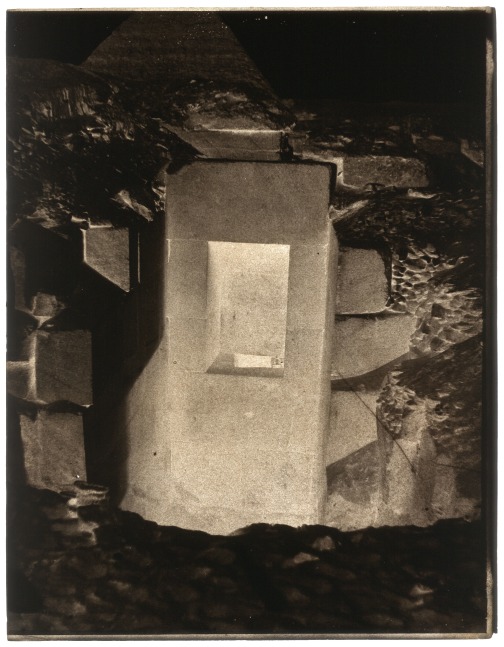
John Beasley Greene (American, born in France, 1832-1856)
Mariette's excavations, granite door found to the left of the Sphinx, Giza, December 1853
Waxed paper negative
31.2 x 24.3 cm
Greene arrived in Egypt in late 1853. An early stop on this first trip was Auguste Mariette's excavations at Giza. Mariette, an ex-journalist and linguistic prodigy whose credentials for excavating were based on his having catalogued all the hieroglyphic texts in the Louvre's Egyptian collections. He had been in Egypt since 1850 and by the time of Greene's arrival had already staked his nation's claim to the almost-buried stone Sphinx by erecting a French flag on its head. Greene's images of Mariette's excavations, to which he was given privileged access, are some of his earliest in Egypt. This negative, a view of the secret doorway leading to a burial chamber displays an unexpected abstraction of light and dark which heightens the drama of Greene having captured this freshly excavated site.

Auguste Salzmann (French, 1824-1872)
"Jérusalem. Sarcophage Judaïque", 1854
Blanquart-Évrard process salt print from a paper negative
23.2 x 33.2 cm mounted on 45.0 x 56.6 cm paper
Title and credits lithographed on mount

Attributed to Dr. Thomas Keith (Scottish, 1827-1895)
Covenanters' Monument, Greyfriars, 1853-1856
Waxed paper negative
21.4 x 26.6 cm
A surgeon by training and an amateur photographer by avocation, Dr. Thomas Keith made his first forays into the field with a camera in 1852 or 1853. In the striking graphic waxed paper negative of Covenanter's Monument, Greyfriars, from 1853-1856, the architecture is reduced to a composition of strong geometric patterns with the light delineating and enhancing its shapes and textures. Covenanters' Monument is one of several studies Keith made of Greyfriars Churchyard in Edinburgh. Greyfriars was already part of Scotland's emerging photographic tradition and was featured by Hill & Adamson.
